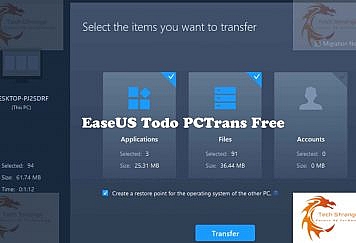“Desperate times, desperate measures,” is the best quote in which the current situation can be summed up. As we all know that we are going through a global pandemic at the moment, this has toppled our conventional ways and living standards on its head. Most of the population is locked in their houses and all thanks to the internet, our infrastructure is still standing tall, because the internet has enabled us to remain connected to one another in dire times like these. If we observe today’s society, it has transcended to a virtual environment. All our day-to-day tasks, whether work-related, educational or entertainment-wise, are conducted over the internet.
The internet is a crucial component of today’s lifestyle because it is the backbone behind current communicational means. Those times are long gone when telephones were considered the best means of communication. However, they are still the most reliable gadgets and because of that, they are widely used as emergency options. Due to this reason, many service providers offer attractive packages on their home phone deals and these home phones have come a long way from their traditional forms. You can check out Spectrum phone plans to examine the features and benefits you can get with a VoIP home phone. Coming back to the internet, it has evolved the fiber of communication and transcended it beyond just voice. Now, we have video calling and conferencing features that are helping shape the future of virtual meetings.
The Zoom Phenomenon
Today, almost everything is based on these virtual conferences, because there are heavy risks related to personal meetings given the current situation. Thus, on account of the pandemic, video calling apps have seen a boom that was never experienced before in history and the one single app that has become the talk of the town is Zoom. Zoom has become the most commonly used app for virtual meetings whether they are work meetings, online classes, or just friends catching up. Everyone’s priority is Zoom. That’s because not only is it free, but its clean and easy-to-use interface allows people with even the basic knowledge of the computer to seamlessly use it in their day-to-day interactions with their loved ones whom they cannot meet in person.
The stats of active users are a testament to how quickly Zoom has jumped the ranks of video calling apps and become the ultimate favorite. Zoom came into the limelight when it broke all records and showed a growth of 225 percent in just one month that was back in March 2020. It has come a long way from there as it is constantly churning out new features and updates to keep its current users hooked onto the app.
Why There Might Be a Need For An Alternative
Apart from all these features, Zoom comes with its fair share of limitations as well. Most of these limitations are associated with the free version of Zoom and since most people are not able to pay for a license, it can become tiring for some users due to the nature of these limitations. In the free version of Zoom, the most frustrating problem users encounter is that all meetings are capped at 40 minutes, which is even less than an average online class and let alone work meetings that can last hours! Another disadvantage of Zoom is that large meetings don’t have HD support. This not only hampers the video quality but sometimes also creates a lag in the stream. This might be the reason why some users are looking to switch from Zoom and luckily there are a couple of alternatives that may help you get rid of the problems you had with the app.
Microsoft Teams
The best alternative that comes to mind is Microsoft Teams because it replicates the core features of physical working space and is an ideal solution for work-related meetings. Backed by the giant Microsoft, it has the ability to provide seamless video conferencing with additional native features to have textual conversations and file sharing. Best applied with a Microsoft OS-based environment, which most work PCs are equipped with, this makes Microsoft Teams the perfect alternative for work-related meetings. It also has a free version that’s the icing on the cake. Without the need to have any kind of account, a user can seamlessly join through their browsers.
Skype
Skype has been the most popular tool for video conferencing before it was taken over by Zoom just last year. Still, many people consider Skype as their preferred application to stay connected with their loved ones. The best thing about Skype is that it’s free, simple, and easy to use and has intuitive options with the backing of Microsoft that provide users with a seamless virtual experience whether work-related or personal over the internet. Skype is also considered the pioneer of group video calling. Although this feature was previously limited to 50 participants only, seeing the increasing need for video conferences in today’s landscape, Skype has doubled this limit so users can easily conduct their virtual meetings without any constraints.
TeamViewer
TeamViewer has been the number one choice for businesses when doing collaborative work. TeamViewer is a kind of application that not only provides the option of secure web conferencing but also has robust features to conduct online presentations and share files. However, the most prominent feature for which TeamViewer is known is its screen sharing feature in which users can share their computer screens with other participants for collaborative working and online presentations – a feature which is often missing in other video calling apps including Zoom. With well over 2 billion connected devices and an active user base that has conducted more than 40 million sessions, TeamViewer has the trust of businesses at its back.
Google Meet
Google Meet is another video conferencing platform that’s intended to cater to business users. Its free version has a capacity of 100 participants at a time, along with a 1-hour continuous video conferencing option – a feature that is hard to find in any free app. The best part is that it has Google’s backing and is part of Google’s workspace which includes other tools like Calendars and Gmail. Mainly used on PC, it has been optimized to integrate with Android and iOS devices as well. Google Meet is integrated with the world’s leading email platform, Gmail, which is also Google’s product. This native support allows users to directly video call their Gmail contacts and with native browser support, it doesn’t need an app to join conversations.
Conclusion
Zoom is a very fun and intuitive app that has bridged the communication gaps between people in times of need. However, some limitations are also associated with it regarding the number of participants and duration of calls. If you are a type of user who is troubled by these limitations or is generally looking for alternatives, the options provided here in this list might be a good start towards a change. These Zoom alternatives have all the features without the limitations of Zoom and are backed by giants of the technological world.
Follow TechStrange for more Technology, Business, and Digital Marketing News.





